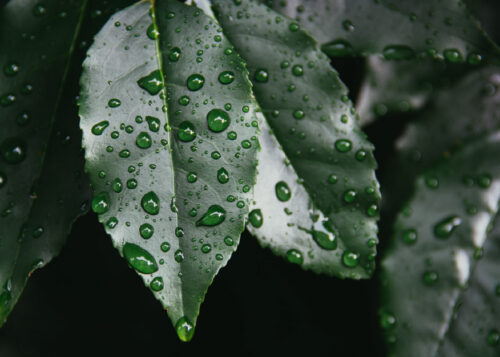INTENSIVE GEL
The εὖSKIN® Intensive Gel is a formulation that is also suitable for use in mucosal areas. It contains Aloe vera, Cucumber, and Chamomile extracts, which imbue the gel with anti-inflammatory1-2, antimicrobial2-3, analgesic4 and refreshing capabilities.
Aloe vera has been used for centuries to treat skin injuries such as burns and eczema owing to its anti-inflammatory1, antimicrobial5 and wound healing properties6. In a clinical study it was also revealed that Aloe vera had a delaying effect on radiation-induced dermatitis in patients who were undergoing radiotherapy.
Cucumber extract has been shown to have antioxidant and antimicrobial properties probably due to its high content of flavonoids and tannins3-4. The extract is also rich in Vitamin C, which stimulates collagen synthesis and assists in antioxidant protection and photodamage7-8.
Chamomile extract has anti-inflammatory and antimicrobial properties2 attributed to its constituents such as levomenol, bisaboloids, chamazulene, and flavonoids. Topical application of chamomile extract on the wound has resulted in faster reepithelialisation compared to the control group9 in a clinical setting.
APPLICABLE SKIN CONDITIONS
- Eczema
- Irritative dermatitis
- Radiation dermatitis
- Skin atrophy
DIRECTIONS FOR USE
On clean skin and mucosal areas (such as genital and nasal area), apply a grape-sized amount of the gel with gentle strokes or/and gentle tapping.
The gel acts as a protective barrier that reduces water loss from the skin.
![]()
![]()
![]()
FULL LIST OF INGREDIENTS
Aqua, Aloe Barbadensis, Glycerol, Sorbitol, Hamamelis Virginiana, Cucumis Sativus, Xanthan Gum, Sodium Hyaluronate, Chamomilla Recutita, Gynura Procumbens, Hydrolyzed Collagen, Salicylic Acid, Potassium Sorbate.
Please always check the ingredient list on the product label once purchased, as it may be subject to change.
REFERENCES
- Vasquez, B. (1996). ‘Anti Inflammatory activity of extracts from Aloe vera gel’, Journal of Ethnopharmacology, 55(1), 69-75.
- Gupta, V., et al. (2010). ‘Pharmacological potential of Matricaria recutita-A review’, Int J Pharm Sci Drug Res., 2, 12–16.
- Mukherjee, P.K., et al. (2013). ‘Phytochemical and therapeutic potential of cucumber’, Fitoterapia, 84, 227-236.
- Kumar, D., et al. (2010). ‘Free radical scavenging and analgesic activities of Cucumis sativus L. fruit extract’, J Young Pharm, 2(4), 365-368.
- Sanchez, M.(2020). ‘Pharmacological update properties of Aloe vera and its major active constituents.’ Molecules, 25(6), 1324.
- Liang, J., et al. (2021). ‘Aloe vera: A Medicinal Plant Used in Skin Wound Healing’, Tissue engineering. Part B, Reviews, 27(5), 455–474.
- Pollar, J.M., et al. (2017). ‘The Roles of Vitamin C in Skin Health’, Nutrients, 12;9(8), 866.
- Shapiro, S,S., et al. (2001). ‘Role of vitamins in skin care’, Nutrition, 17(10), 839-844.
- Nayak, B. S., et al. (2007). ‘Wound healing activity of Matricaria recutita L. extract’, Journal of wound care, 16(7), 298–302.









